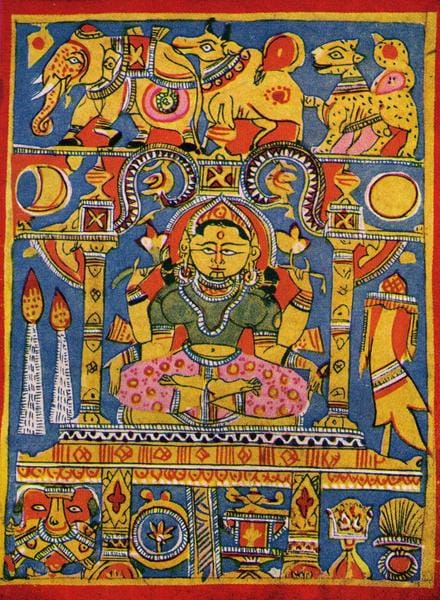Punk : The idea of perfection and details in designs are an intrinsic part of cultural crafts. This refined look of crafts has always fascinated me until the current prolonged situation with the pandemic made me realize why isn’t design in crafts used for ‘activism’ or ‘rebellion’ or a cry for help for the change of current systems. I was inspired to think more in this direction after I recently revisited the Met’s spring 2013 Costume Institute exhibition, PUNK: Chaos to Couture, which examined Punk’s impact on high fashion from the movement’s birth in the early 1970s. In this article, let us learn more about this exhibition and PUNK! (more…)
Indian Floral : For centuries, plants and flowers have inspired Indian artists of different genres. The lotus flowers and floral meanders depicted in the Buddhist sites dating back to the 3rd century, the depiction of Hindu God Vishnu on a throne of a lotus flower, and the famous paintings of Ajanta and Ellora caves from the 5th century are the most excellent and oldest examples depicting florals in Indian Art. However, florals did not become the design language for Indian textiles for a long time, not until the beginning of the Sultanate Period in the twelfth century when Islamic culture started influencing Indian art & design.
Indian Art
The history of painting in India goes back 2000 years, something that many do not realize, starting with the beautiful murals of Ajanta, which are interesting too because they show people wearing craft still extant. The 11th century saw the illustrated Pala manuscripts, painted on palm leaves, and the earliest example of miniature painting in India. The next development was the Jain school of Gujarat, which eventually lead to the Rajput tradition of miniature art. As it grew and developed, the Rajput tradition divided into two distinct schools, Rajput and the Pahari school, based in Himachal Pradesh, the hilly state in the north-west of India.


